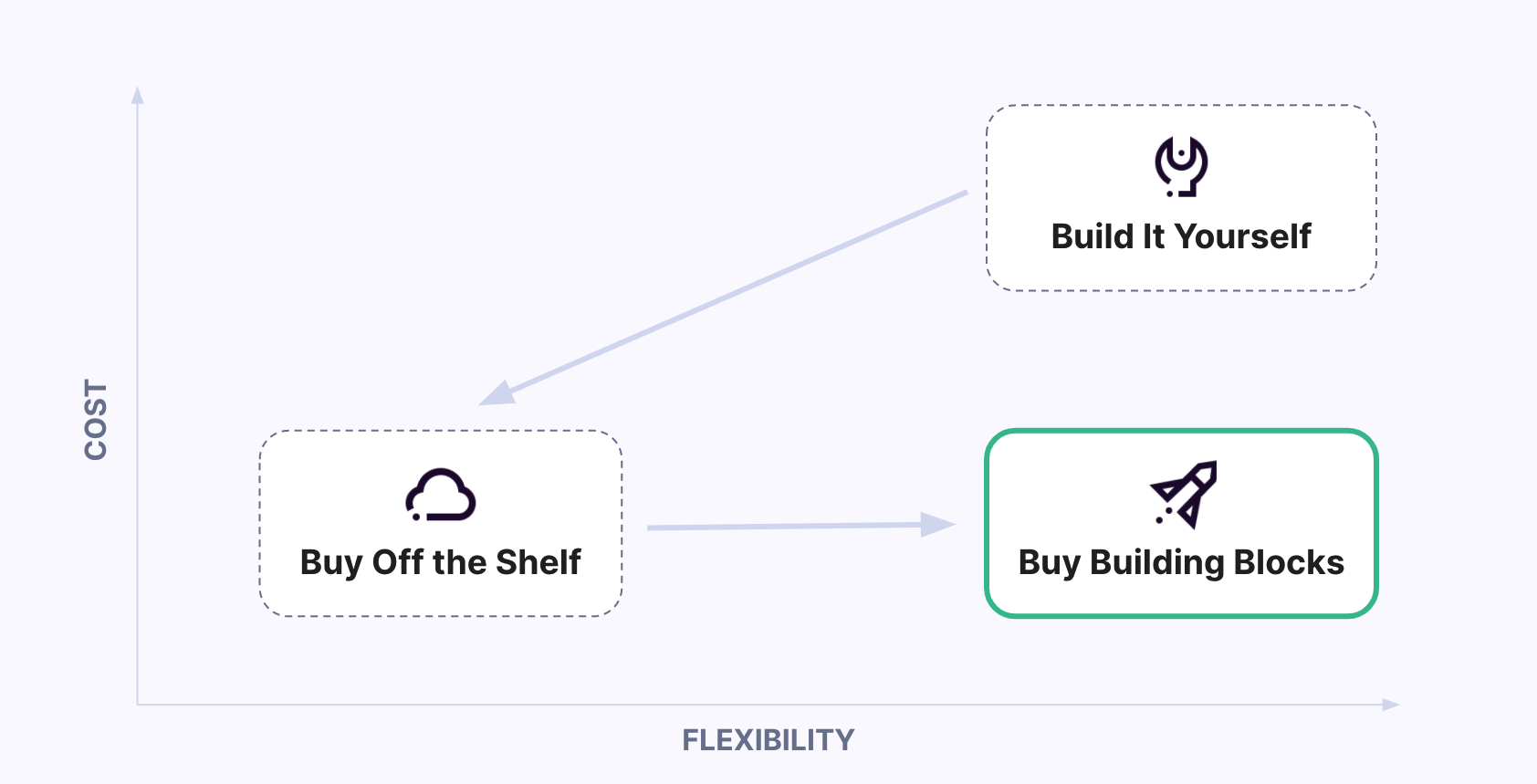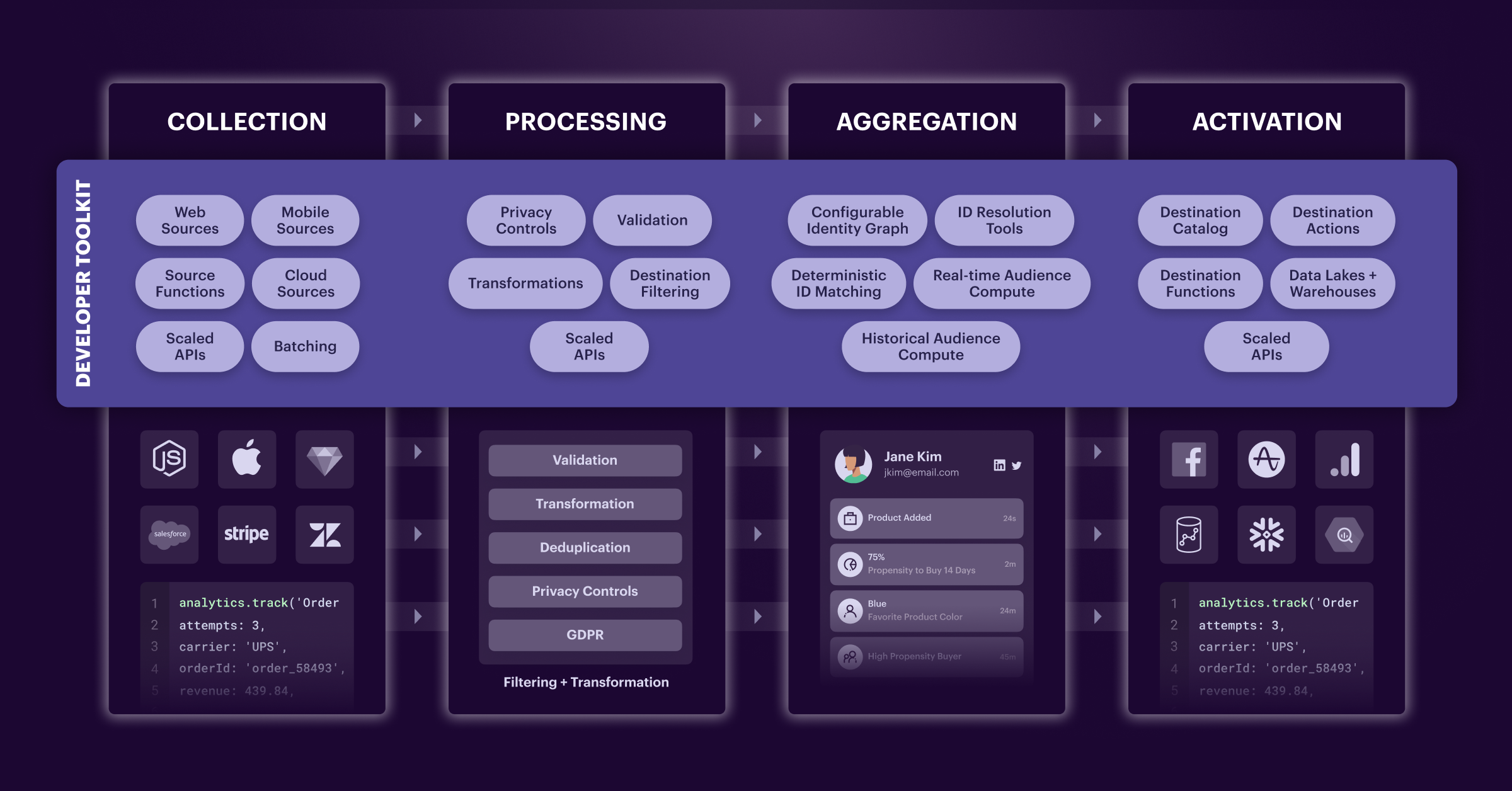Today’s most innovative companies don’t buy all-in-one SaaS suites; they invest in building blocks that empower developers to build the systems that drive personalization and growth.
Customer engagement has been THE buzz word in the martech industry for years. It’s a catchall statement for the experiences customers have on websites and apps, the emails they receive, the ads they interact with, and so on.
All companies want engaged users. And customer engagement skyrockets when you deliver more personalized and relevant experiences. This has led to an explosion of martech tools, which in turn has added complexity to every company’s data infrastructure, requiring dedicated developer support. Developers are forced to spend hours managing martech integrations, and less time on more meaningful work. According to Forrester, 45% of martech users acknowledge that their current environments are too complex.
So how do you navigate this complexity? At Segment, we’ve known from the start that the key requirement to solving engagement challenges is to solve the core data problem.
With the Developer Toolkit, companies are empowered with the building blocks they need to connect and route their trusted, secure, first-party data wherever their teams need it. It provides your developers with the tools they need to customize and extend the Twilio Segment platform. Your developers can support custom configurations to:
-
Streamline data collection. Save time setting up your analytics infrastructure and improve the performance of your apps or websites by using the most performant data sources. Access the latest libraries, SDKs, and server-side sources to simplify data collection across every app, website, or cloud SaaS platform that your company uses.
-
Customize and extend your integrations. Access pre-built integrations or blaze a new path and build your own. Either way, you have the ability to customize and control how you integrate data across the tools and platform your team requires.
-
Scale your data infrastructure effortlessly. Future-proof your data infrastructure by working with a flexible and extensible solution that can easily scale as your company grows and introduces new requirements.





